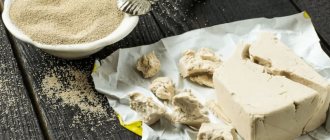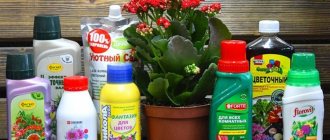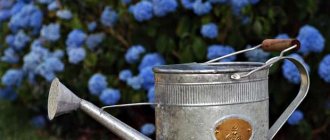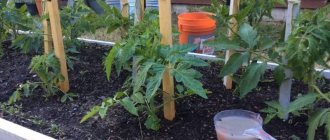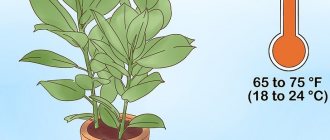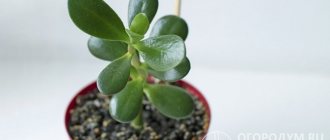Often we, gardeners, think about how to feed seedlings, already with the appearance of the first shoots. Although in reality, our seedlings do not always need additional feeding. If we have selected or mixed the soil correctly, the seedlings will have enough nutrition until they are transplanted into the garden bed.
So, you can do without fertilizing? It is possible when the plants are pleasing to the eye. However, under certain conditions, seedlings need fertilizing like air. Let's figure out in what cases young seedlings need nutrients, and how to feed the seedlings at different stages of development if something goes wrong...
How can you feed
Feed the seedlings either in the morning or in the evening. The main thing is that the sun's rays do not burn, otherwise the whole process will go down the drain.
Root feeding
This feeding method involves supplying nutrients directly to the root system. Both organic and mineral fertilizers, both dry and liquid, are used here.
However, according to experienced gardeners, liquid fertilizers are better absorbed.
For treating seedlings, ready-made preparations prepared for specific crops are recommended. Fertilizer is introduced under the root; for this, use a watering can with a narrow long nose or a medical syringe without a needle. This way you can carefully feed the plant without disturbing the leaves.
Foliar feeding
If in the first case it is necessary for the solution to get into the soil, then foliar feeding is a method of pollination. The liquid composition envelops the bushes in microscopic drops, which are easily absorbed into the leaves and trunk of the sprouts. This method increases plant immunity.
Fertilizer should be sprayed so that all parts of the plant receive a “shower”. The first foliar feeding is carried out after the appearance of true leaves. The second is during the flowering period.
For foliar feeding, Energen, Zircon, Ecopin and other stimulants are used.
It is worth noting that this type of seedling treatment is effective:
- In tomatoes - if the trunks are too elongated.
- In cucumbers - as a prevention of peronosporosis.
- Cabbage acts as protection against pests.
- In flowers - if the sprouts are too stretchy.
The main thing that a gardener should remember:
The fertilizer should be diluted according to the instructions; doing it on your own can lead to disease and death of the plants.
External signs of fertilizer shortage
Before you start feeding, you should take a close look at the flower seedlings. When considering their appearance, you can accurately determine whether they need specific feeding at home or can get by with standard methods.
Here's what you need to pay attention to:
- The plant has begun to wither - you need to check the acidity of the pH environment. If the soil is excessively acidic from 3 to 5.5 or, conversely, sufficiently alkaline - above 7.5, then the seedlings will gradually begin to die. In such conditions, its root system does not have the opportunity to develop. The optimal soil for growing is slightly acidic or neutral. In the absence of an optimal environment, it is recommended to add dolomite flour, lime or wood ash.
- The seedlings have stopped developing and are turning yellow - when planting, you need to choose a soil that is light, loose, and well-permeable to air and moisture. In most cases, many people purchase commercial substrate, which does not provide rich conditions for germination. Therefore, before planting, it is recommended to dilute it in half with vermiculite, and during cultivation, loosen it more often and apply nutritious mineral fertilizers. It is especially important to feed flower seedlings with nitrogen, as this is necessary for growth. It allows you to grow not only the above-ground part, but also underground rhizomes.
It is very important to monitor the condition of the seedling so as not to miss the moment and carry out the procedure of feeding flower seedlings on time.
If the seedlings are preparing to move to a new place of residence, but it is clear that the sprouts have drooped, then the transplantation work should be accelerated. In such a situation, a favorable method would be to quickly transfer it to new soil, where phosphorus, potassium and nitrogen will first be added.
When to feed
In the first months of life, plants especially need careful care. Feeding is one of the essential conditions for good growth. Healthy seedlings have a strong trunk and leaves, and they themselves have a pleasant, cheerful green color.
Experienced gardeners read plants like a book, that is, by their appearance they can determine what the crop lacks for good development:
- Lightened lower leaves indicate a lack of nitrogen.
- Potassium deficiency results in the appearance of yellowness on the leaves, and the tips of the leaves begin to dry out.
- Lack of phosphorus - purple, bluish tints of leaves, weakness of shoots.
- The lethargy of sprouts is due to a lack or, on the contrary, an excess of sun.
If there is at least one of the signs, you need to take immediate action.
It is important to know,
that each crop requires special fertilizers, as well as special care rules.
Timing of fertilizing on the windowsill
Feeding should be done once a week, not more often. Moreover, when the plants have undergone picking, that is, they have at least two or three true leaves. Experts advise feeding small sprouts in the morning or evening, during hours when there is no sun. Moreover, the solutions are poured under the root; it is not advisable to get them on the leaves. Before fertilizing, first carry out regular watering so that the soil becomes moist.
It is recommended to alternate organic fertilizers with mineral ones if the plant is withering, but do not overwater it, otherwise it will die. If you do not have confidence in your own abilities and the ability to prepare a solution for feeding yourself, it is better to use ready-made formulations that can be bought in a specialized store.
Lighting
Petunia seedlings require a lot of light. In greenhouses where plants are grown for sale, seedlings are illuminated around the clock in the first weeks. Thus, its development stimulates earlier flowering.
For landscaping a balcony or cottage, such additional tricks are not necessary. Especially if you sow the seeds in March and place the planting containers on a bright windowsill. 11-12 hours of daylight for petunia seedlings will be quite enough for normal, although not accelerated, development. But winter plantings (in January-February) need to be illuminated. Most often, gardeners do this: at 7-8 o’clock in the morning they turn on the backlight (discharge, fluorescent or LED lamp), and turn it off at 9-10 o’clock in the evening.
Fluorescent lamps for illumination are installed directly above the seedlings, no further than 10-15 cm from the upper leaves
What to feed at home
In order for seedlings to grow happily, they need high-quality nutrition - organomineral, enriched with all the substances necessary for the plant.
Mineral fertilizers
Mineral fertilizers include the following useful complexes:
- With nitrogen.
- With phosphorus.
- With potassium.
It is important to consider
that each crop needs a certain amount of nitrogen, phosphorus and potassium, so it is better to purchase ready-made balanced formulations.
Organic fertilizers
Popular organic fertilizers used for root feeding are:
- Mullein.
The slurry is diluted with water in equal parts, left for a week, and then diluted with a large amount of water.
- Green fertilizers.
An infusion is made from organic residues with water. Water at the root.
- Chicken droppings.
The droppings are poured with water and infused. Then prepare a solution for irrigation, diluting it in 20 parts of water.
- Ash.
Sprinkle soil at the roots.
Feeding with folk remedies
Experienced gardeners feed seedlings for the first time a couple of weeks after picking. In the case where the sprouts are initially planted in separate containers, fertilizing is possible when the seedlings have at least three true leaves. Fertilizing is carried out weekly, alternating various fertilizers.
Feeding is carried out:
- Ammonia.
This product contains nitrogen, which plants need for leaf growth and trunk strength. Prepare the solution as follows: take a teaspoon of ammonia per 10 liters of water. The solution is poured under the root; you can use a syringe without a needle for this.
- The shell.
Gardeners use the shell as a source of calcium, which plants need for good development. The shells are infused with water for three days (one egg shell per liter). Then the infusion is diluted with water, taking three parts of clean water to one part of the egg infusion. You can also simply grind the shells to a dusty state and sprinkle on the soil.
- Iodine.
Bacteria fear this product like fire. But the seedlings begin to grow quickly and look strong. The solution can be prepared by dissolving a drop of iodine in three liters of water. Water at the root of the sprouts. You need to try not to let the solution touch the leaves, otherwise there will be burns.
- Coffee.
More precisely, coffee grounds rich in nitrogen. The grounds must first be dried, and only then introduced into the soil.
- Brewer's yeast.
Yeast enriches the microflora and strengthens the roots of the plant. Usually, for 10 liters of water, take 100 g of yeast, a couple of tablespoons of sugar, and then leave the solution for 24 hours. The resulting fertilizer must be diluted with water (one part of the yeast solution to five parts of water). The solution is injected under the root.
- Ash.
Ash rich in potassium and phosphorus will help seedlings grow strong and healthy. You can simply sprinkle the soil with dry ash, you can prepare a solution. Hot water is used for the solution. For half a glass of ash - 10 liters of water. The solution should sit for a day. Before watering, filter the product.
- Banana peel.
It is an excellent source of potassium. The peel of a couple of bananas is finely chopped and filled with water. The solution is left for three days, then filtered. Water at the root.
- Onion peel.
Containing vitamins A, C, group B and beneficial microelements, the husk becomes a plant protection against infections. The solution is prepared as follows: a glass of husk is poured with a glass of boiling water. The mixture should sit for 48 hours. Before watering, the solution is filtered and diluted with water in the ratio: 1:3.
What and how to water tomato seedlings so that they grow better
How to water tomato seedlings to help them grow better? What optimal watering conditions for tomatoes need to be provided to get an excellent harvest? What is the difference between watering tomatoes in open ground and in a greenhouse? What fertilizer options will promote better plant growth and development? Finding answers to all these questions is very important in order to get a bountiful and healthy tomato harvest.
A ripe tomato is a juicy and tasty vegetable that contains a large amount of moisture, vitamins and microelements. In order to regularly get a huge harvest of this crop, you need to learn how to properly water and fertilize it. It is the correct frequency of watering, optimal temperature conditions, and balanced fertilizers that will allow you to enjoy tasty and healthy tomatoes from your garden throughout the summer.
Plant nutrition
Tomatoes and peppers
Tomatoes love nutritious soil, and peppers are not far behind tomatoes in their preferences. In order for seedlings to develop well, you need to enrich the soil with fertilizers containing nitrogen.
The solution is prepared from urea (0.5 g), superphosphate (4 g), potassium salt (1.4 g) and water (1 l). Seedlings are watered only after two good leaves appear. The second time you need to fertilize after diving - with urea (a tablespoon) dissolved in water (a bucket).
Before sending the seedlings to the site, ten days before, they are again fed with fertilizers.
Important,
so that the fertilizing contains nitrogen, potassium and phosphorus.
Peppers, unlike tomatoes, must first be fed with a solution of urea, superphosphate, potassium sulfate (ratio in grams - 1: 3: 5) and two liters of water. The soil is sprinkled with ash before watering. Each time feeding is carried out, the dose of drugs is doubled. You need to feed every ten days, not more often.
cucumbers
Cucumbers need the following feeding:
- ammonium nitrate (2/3 teaspoon), potassium sulfate (2/3 teaspoon), superphosphate (tablespoon), dissolved in water (10 liters).
- urea (a tablespoon), superphosphate (1.3 tablespoons), dissolved in 10 liters of water.
- organic composition. Dilute the slurry in water (proportions 1:1) and leave for a week. Then the composition is diluted with water, taking ten parts of water for one part of the composition. This solution is poured over. Another option is to pour chicken manure with water and let it sit for a week. Dilute the composition with water for irrigation in a ratio of 1:20.
The second time, cucumber seedlings need to be fed two weeks after the formation of the second leaf.
For the solution you can use:
- A tablespoon of nitrophoska,
- A teaspoon of ash
- Three liters of water.
There is another option:
Experienced gardeners advise not to fertilize with the same fertilizers twice in a row. So, if you first fertilized with a chemical composition, then the second time you need to use organic fertilizers.
Cabbage
They also begin to feed cabbage after the first good leaves appear. To do this, take half a teaspoon of a special fertilizer, complex, with microelements, and dilute it in a liter of water. Compositions with boron and molybdenum are ideal.
Two weeks later, before picking, the soil is enriched with ash (a couple of tablespoons per bucket of soil is enough) and double superphosphate (a tablespoon). After picking, nine days after this procedure, they are fed with a solution consisting of ammonium nitrate (2 g), potassium (2 g), and superphosphate (4 g) diluted in a liter of water. After 14 days, feeding is repeated, but the solution becomes more enriched due to the doubled proportions of nutrients.
Eggplant
Eggplants will have to be fed five times, and at the root. Fertilizers with nitrogen and potassium will be required before the picking process. A little later - after picking - you will need fertilizers with phosphorus. Experienced gardeners recommend “Ideal” and “Kemira Universal” fertilizers, which are diluted with water (a teaspoon per five liters). Watering is carried out at the root, without touching the leaves. A couple of weeks after this watering, you can repeat the process, doubling the dose of fertilizer.
A good solution would be to feed the eggplants with an infusion of banana peels; this solution will enrich the soil with potassium. An infusion of potato peels is also good. The peelings are first boiled, and the plants are watered with the cooled solution.
Petunia and lobelia
Petunia and lobelia seedlings are fed with complex fertilizer. It could be Plantofol, Kemira Lux. Fertilizers should contain nitrogen, which these flowers love. You can also use “Ideal”, “Master”, “Garden of Miracles”.
Repeated treatment occurs when the plants become strong. They are fed a third time before transplanting into the ground on the plot.
Foliar feeding is also important. To maintain health, plants are sprayed with urea, potassium guamate (peat-based), aquarin, and vermicompost.
Florists need to know
that seedlings are pollinated with fertilizer, but it should not be moistened too much.
It is also recommended to feed the flowers with a solution of mullein (slurry and water in a ratio of 1:10), a liquid complex fertilizer.
Correct feeding:
- Watering with water.
- Introduction of fertilizer.
- Another watering.
- Pollination of foliage with mineral fertilizers.
Seedlings, what do you need?
Nitrogen plays a significant role in the formation of the above-ground parts of plants . It is this macronutrient that ensures active growth and the rich green color of the leaves. Enough nitrogen means the seedlings of tomatoes, peppers and other plants look plump, vigorous and strong. But you shouldn’t overfeed either - the plant will begin to fatten, increasing green mass, instead of forming ovaries and producing fruit.
In addition to nitrogen, young plants need a number of other substances: phosphorus, potassium, manganese, iron, boron, copper, zinc, molybdenum, calcium . And, in order not to rack your brains about what specific substance the plants lack, the easiest way is to fertilize them with a complex mineral fertilizer. And the plants themselves will take from the soil what they need. And if you still want to get to the truth, why your plants look this way and not otherwise, a hint sign will help



